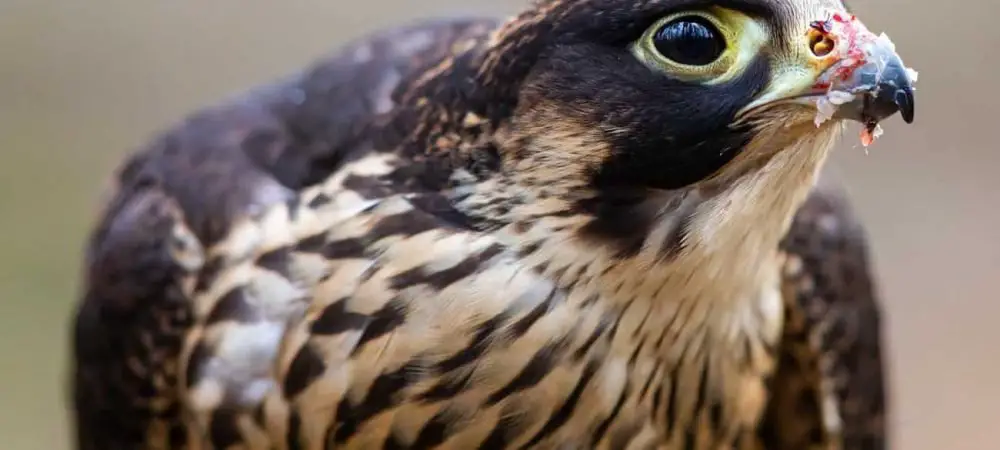
Want to learn more? This book on the Birds of Prey of North America is a fantastic read!
Iowa is a Midwestern state in The United States between the Missouri River and Mississippi River.
This state is famed for its rolling plains and cornfields and is recognized for 83 state parks with nearly 53,000 acres of land, popular for sight-seeing, hiking, camping, picnicking, and swimming.
The climate in Iowa is usually a humid continental climate known for hot summers and cold winters.
This landscape and climate are welcoming homes to a wide array of birdlife, particularly hawks!
There are 10 hawk species that call Iowa home, and below you will find their distinctive profiles. Red-Tailed Hawks are commonly seen in Iowa, although you are not likely to spot the Ferruginous Hawk.
Want to attract birds of prey to your yard? Take a look at our article!
What Hawks can be seen in Iowa?
Table of Contents
1. Sharp-Shinned Hawk
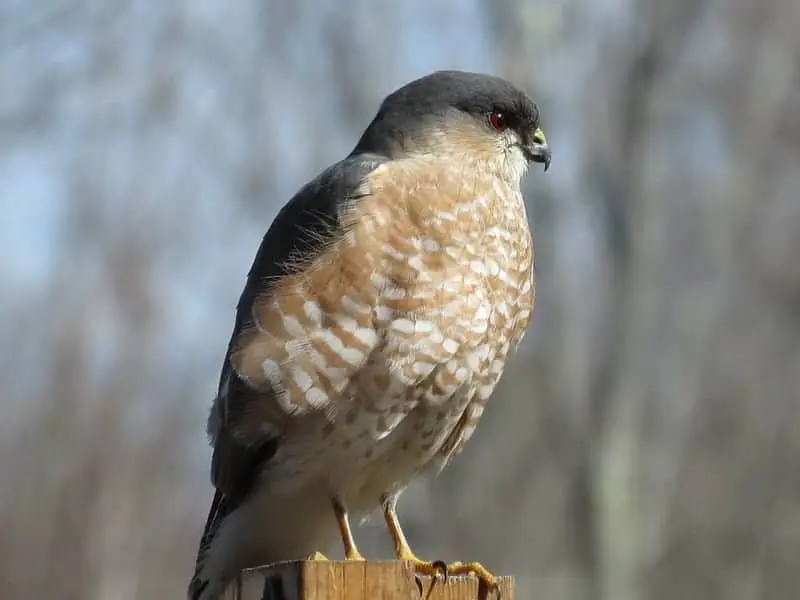
“Sharp-Shinned Hawk” by ‘Dennis Murhpy‘ is licensed under CC BY 2.0
Wingspan
43-56cm
Weight
87-218g
Life Expectancy
3 years
Diet
Robins and Thrushes
Sharp-Shinned hawks are a small species and they are the smallest hawks in the state of Iowa.
In fact, the males are the smallest hawks in the entire United States. Though these hawks are tiny, they are known to be athletic and acrobatic!
These hawks have short and petite rounded wings, although they have square tails.
Adult hawks are gray with pastel orange colored underbellies. Like other species, the juveniles are more streaky and brown than their adult counterparts.
The overall population of Sharp-Shinned hawks is increasing, and are fairly common in Iowa in forested areas.
You can also spot them near bird feeders, preying on songbirds during the summer months. Otherwise, these hawks dwell and breed in forests, in dense trees.
You can quickly recognize the Sharp-Shinned Hawks by their high-pitched shriek and their alarming ‘ki-ki’ call.
2. Cooper’s Hawk
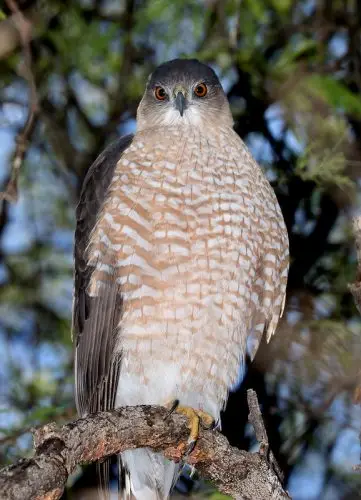
Wingspan
62-90cm
Weight
330-680g
Life Expectancy
Up to 12 years
Diet
Small Birds, Mice & Squirrels
Cooper’s Hawks are small to medium sized birds with the males being significantly smaller than the females.
Both male and female hawks have very short, round wings, with an accompanying short tail.
However, adult hawks are gray and have pastel, orange colored barring, and immatures are brown. Cooper’s Hawks are much more common in Iowa than in the past years.
This is estimated to be due to an increase in urbanization over the past years. Iowa residents commonly hang bird feeders in their backyards, offering Cooper’s Hawks the opportunity to prey on yardbirds.
These hawks have now become popular visitors in many urban areas in the state.
Though you can now spot these hawks in the city, they also take habitat in forests, woodlands, and mountains.
Cooper’s Hawks are generally a bit quiet, especially during breeding season. However, you can still hear their ‘cak-cak-cak’ call during this time.
These hawks breed near forests and sometimes in residential areas.
Interestingly, males display submissive behavior as they fly in large, slow arcs until the female calls out for reassurance before approaching.
3. Northern Goshawk
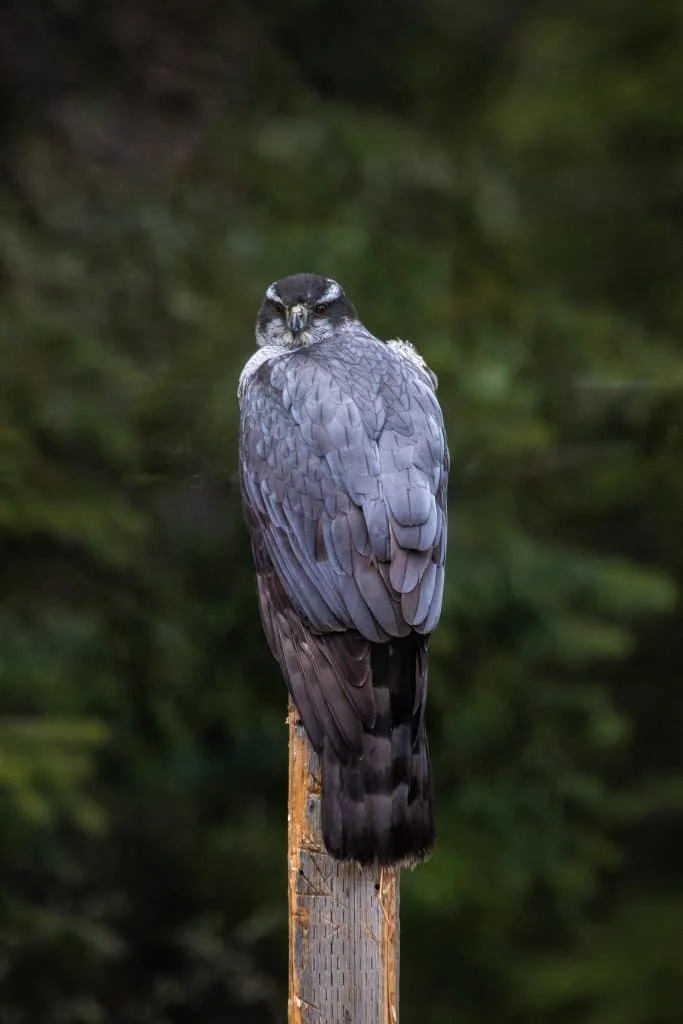
Wingspan
89-127cm
Weight
631-1364g
Life Expectancy
7 Years
Diet
Mammals, reptiles & insects
Northern Goshawks are a medium-large species of hawk.
The mature Goshawks are more of a pale gray color, however immatures have brown streaked feathers.
These hawks also have unmistakably deep, red eyes. Northern Goshawks are a little more difficult to spot in Iowa since they are a bit more secretive than other species.
They prefer living in large forests in cone-bearing trees, away from civilization.
In fact, if you approach their nests, they are likely to attack you! Some Goshawks are short term migrants during cold months while other birds stay in the same place all year.
Though they prefer to be alone, you may be able to see them during spring and summer months near their preferred forests–just remember to be cautious!
4. Red-Shouldered Hawk
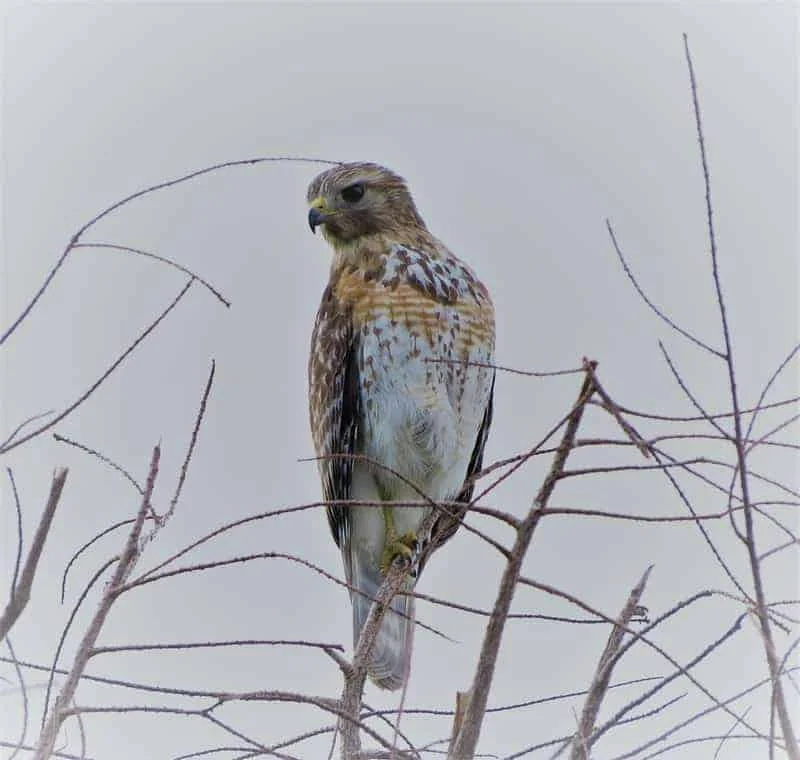
Wingspan
94-111cm
Weight
486g-774g
Life Expectancy
2 years
Diet
Small mammals, reptiles & amphibians
Red-Shouldered Hawks are large with distinct markings of, a rufous chest, mostly white underwings, a bold tail, and red shoulders that are strikingly visible when they are perched.
Red-Tailed Hawks are seen in large, open areas, they are actually common forest inhabitants.
They prefer woods with extra space for optimal hunting opportunities.
You can also spot them in suburban areas where houses meet woodlands.
They can frequently be seen during the winters, especially in backyards. The Red-Shouldered Hawk has a unique sounding ‘kee-aah’ with the first not being high in pitch and the second being lower pitched.
These hawks are monogamous with the pairs remaining in the same territories, reusing familiar nesting sites.
An interesting characteristic about mating season is that many “circle flight sky dances” are displayed.
5. Broad-Winged Hawk
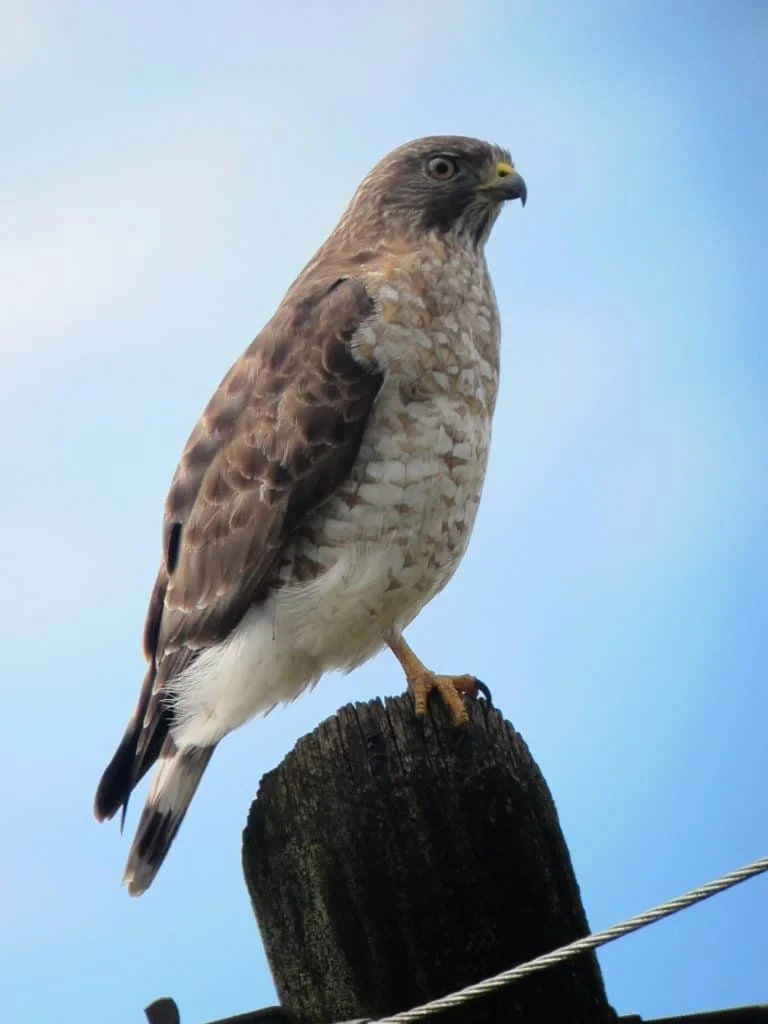
“Broad Winged Hawk” by ‘Felipe Uribe‘ is licensed under CC BY 2.0
Wingspan
81-100cm
Weight
265g-560g
Life Expectancy
Up to 20 years
Diet
Small mammals & insects
Broad-Winged Hawks tend to be small to medium in size with solid colored red-brown feathers and a black and white bar that accents their tails.
Immature hawks resemble adults but they have thin tails and more pastel colored feathers. Broad-Winged Hawks are quite common in Iowa but not readily seen as they spend their time in deep woods, avoiding human contact.
Though you may not see them, you can still hear when they are around by their piercing whistles.
You can distinguish the males from the females by a higher pitched call. These hawks typically breed in the spring and summer months in forests, marshes, and woodlands.
Throughout the state, Broad-winged Hawks are best known for their migrations every autumn season. You can witness this migration around September to late October!
6. Swainson’s Hawk
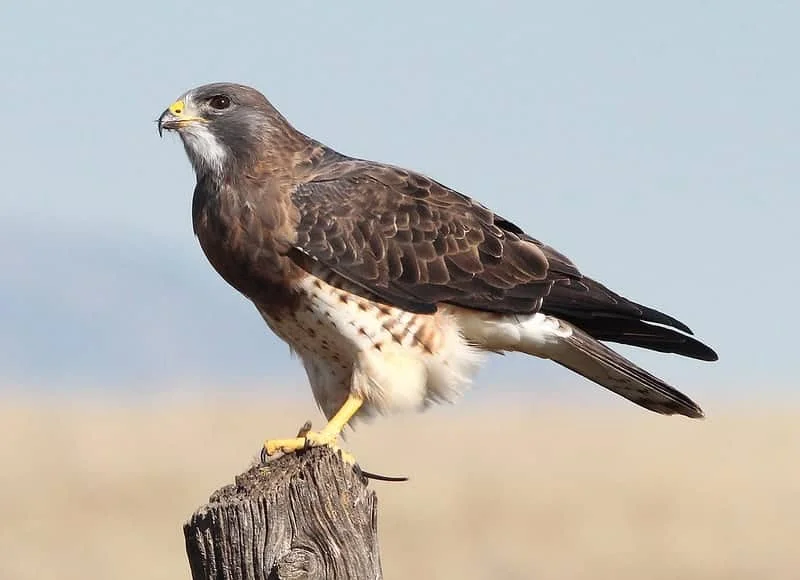
Wingspan
4 feet
Weight
693-1367g
Life Expectancy
16-19 years
Diet
Mammals & Insects
Swainson’s Hawks are large hawks and have larger wings and shorter tails.
Most of these hawks have dark feathers and white underparts, however they can be a variety of colors including pastel brown.
Swainson’s Hawks arrive in Iowa every April where they spend the summer breeding and raising their young.
Actually, you can readily see them toward the end of August or beginning of September, as they begin their tedious flight to Argentina.
Their nesting sites are typically in trees or large shrubs in the open country.
You’ll identify these hawks by their ‘kreeeeer’ sounding calls. Another interesting characteristic is that females give a deeper version of the cry when receiving food.
When Swainson hawks are not breeding or migrating, they can be seen in grasslands or perched out in the field.
7. Red-Tailed Hawk
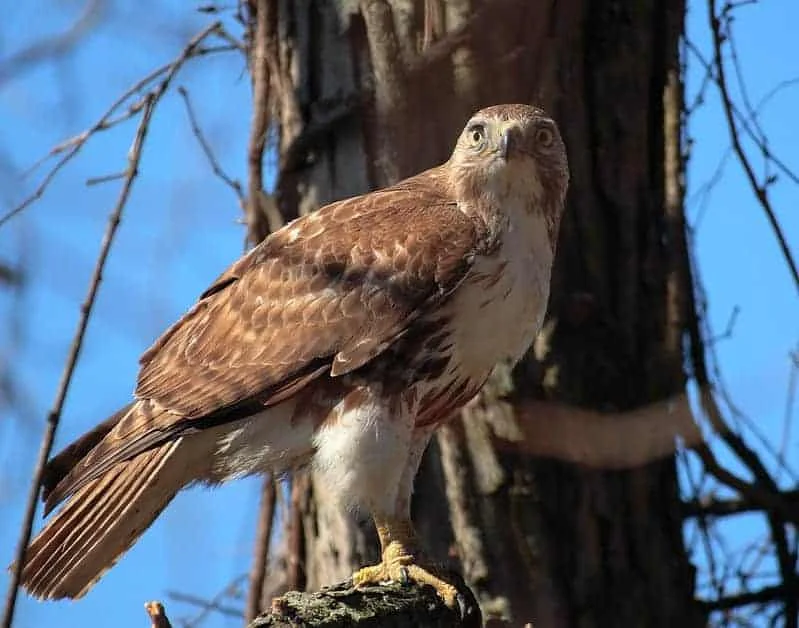
Wingspan
114-133cm
Weight
900-1460g
Life Expectancy
10-15 years
Diet
Small mammals, mice & voles
Red-Tailed Hawks are probably the most common hawks in all of North America. Red-Tails are very common in Iowa and many residents are familiar with them.
Living up to their name, Red-Tailed Hawks have notable red tails, though their bellies are quite pale.
Interestingly enough, only mature hawks have red tails. These hawks have a fascinating call that sounds similar to a hoarse and raspy ‘kee-eeeee-arr’ call.
Red-Tails migrate in early spring, when they can most readily be seen attracting mates by soaring high in the sky.
In Iowa, Red-Tailed Hawks are often seen on drives through the countryside, as the hawks are soaring in the sky or perched along a fence post.
Oddly enough, Red-Tailed Hawks are solitary birds waiting in large nests to swoop in on their prey.
8. Rough-Legged Hawk
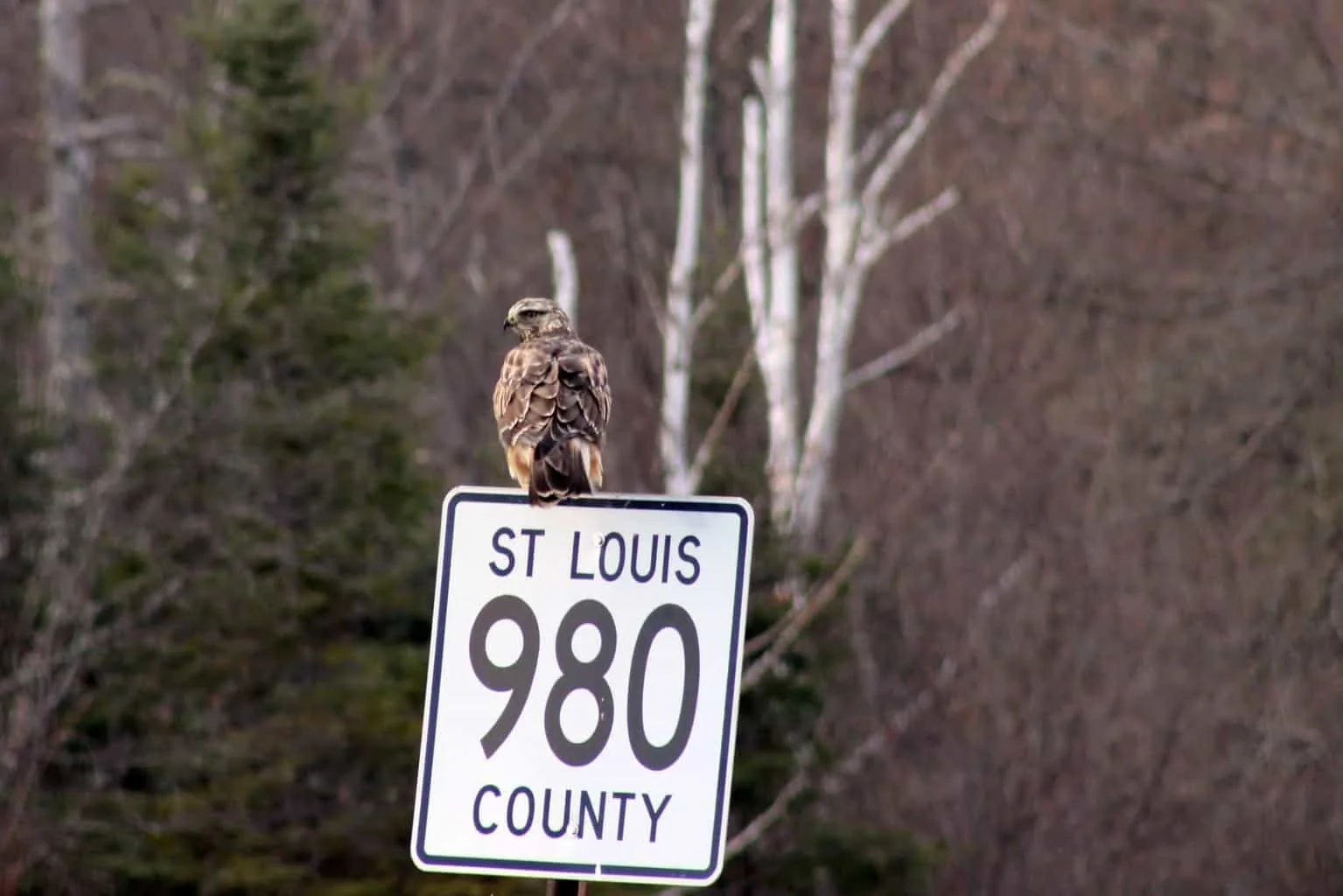
Wingspan
132-138cm
Weight
715-1400g
Life Expectancy
Up to 18 years
Diet
Small rodents
Rough-Legged Hawks are medium to large sized birds identified by their large, narrow wings. An interesting characteristic about this hawk is that they have varying colors and patterns.
These hawks have mostly brown-black feathers all over, with the exception of white feathers on their tails. You’re only likely to see these hawks in Iowa during winter migration in vast open areas.
These birds display a notable hunting style where they hover facing the wind, searching for prey.
Their nests are built with collections of sticks in smaller forests, fields, or marshes.
Though these hawks are usually quiet, you can identify them by their loud squawks or their gentle hissing sounds. You are most likely to find this hawk during the summer.
9. Ferruginous hawk
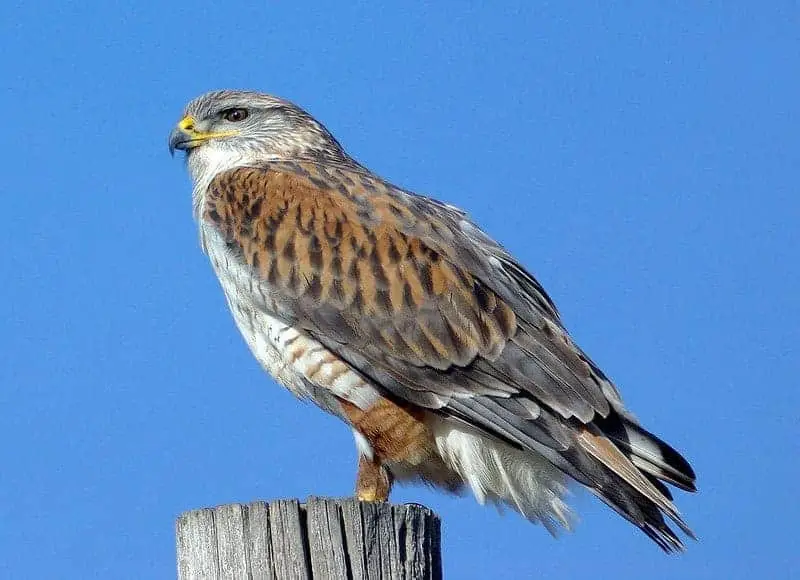
Wingspan
133-142cm
Weight
977-2074g
Life Expectancy
16-20 years
Diet
Small mammals
Ferruginous Hawks are larger birds with large heads, pastel colored feathers on their wings and underparts, and rust colored feathers detailing their legs and bellies.
These hawks prefer the dry lands of the open country, but have been known to live in some low-density forests building large nests from tree materials.
Since these hawks are not the most commonly seen in the state, there is little reported on their Iowa behavior patterns.
However, adult hawks are known for their raspy, screeching call, and immature hawks have high octave cries.
Ferruginous Hawks have the best chance of being seen in open spaces like Iowa’s grasslands, prairies, scrublands, and woodland edges.
10. Northern Harrier
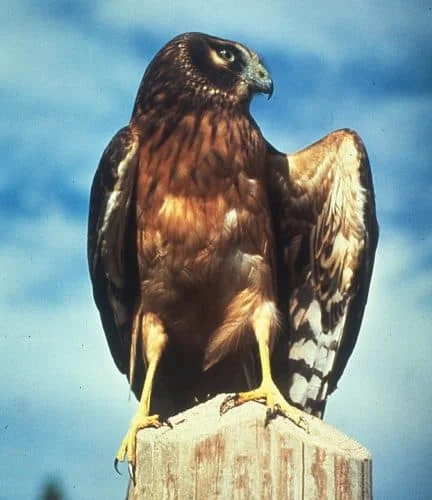
Wingspan
120cm
Weight
390g
Life Expectancy
16 years
Diet
Rodents and small birds
Northern Harriers are a medium species of hawk, readily known for their long tails and petite wings.
While adult males are a pale gray color with white underparts, females and juvenile hawks tend to be brown.
You may recognize this particular species because it closely resembles an owl. Northern Harriers are somewhat endangered in the state of Iowa, although the population is slowly increasing.
You can observe them taking habitat in open landscapes and wide horizons such as wetlands, meadows, prairies, grasslands, or old fields.
You will recognize them by their ‘kek-kek’ sound they give when they feel threatened.
You can also distinguish the females from the males by their high-pitched whistle. You are likely to spot these hawks nesting on the ground in dense clumps of vegetation.

More Articles.
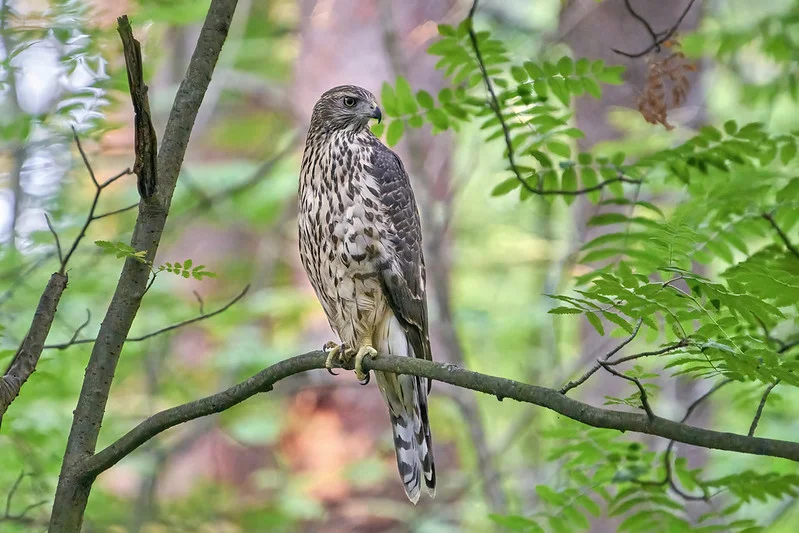
What Hawks can you see in Germany? (3 Species with Pictures & Sounds)
What Hawks can you see in Germany? There are 3 different species of Hawks that
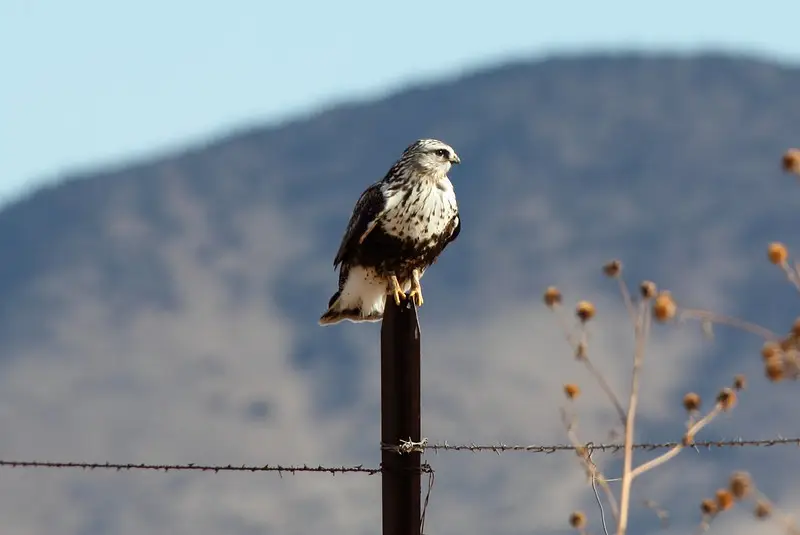
What Hawks can you see in France? (3 Species with Pictures & Sounds)
What Hawks can you see in France? There are 3 different species of Hawks that
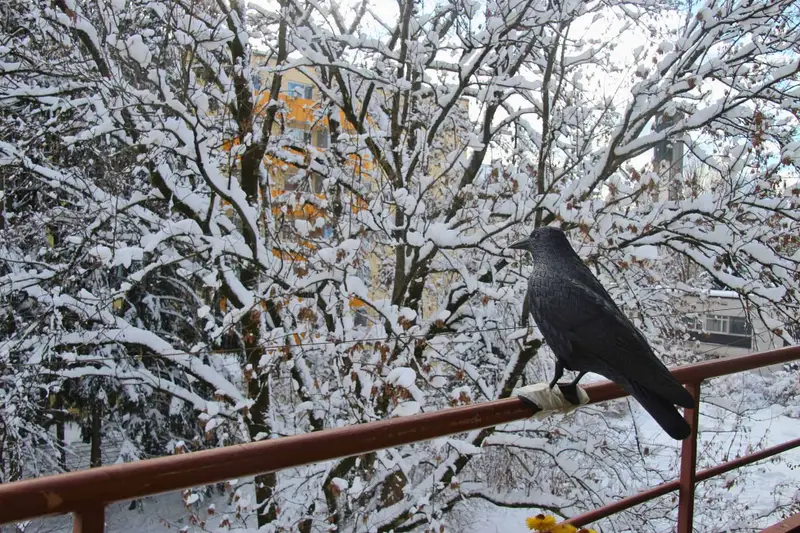
How to Attract Birds to a Window?
All birds can be attracted to a window feeder. Some will require bright colors to

About Us
We are avid bird-watchers who recently retired, allowing us more time to travel the world. Fortunately, we have managed to visit numerous countries around Europe, Asia, and America. Watching and photographing birds has been a passion for many years and we are making the most of the extra time on our hands!
